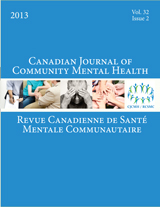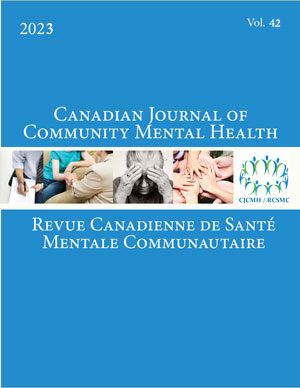Volume 32 • Number 2 • June 2013
Articles
OPEN ACCESS
Adventure-based therapy (ABT) involves experiential learning, outdoor education, group counselling, and intrapersonal education. While it has shown benefits in a number of populations including at-risk youth, little research has focused on individuals with psychosis. The objective of this study was to employ a mixed-methods pre-post design to examine the feasibility of a 6-week ABT intervention in an outpatient care setting among 15 adults with psychosis. The intervention proved feasible with significant improvements found in engagement in the recovery process, emotional well-being, and energy level. No changes in self-esteem or global health were observed.
OPEN ACCESS
Our team has worked closely with First Nations, Métis, and Inuit (FNMI) community partners and our local school board over the past 9 years to develop a range of strengths-based health promotion programs for FNMI youth. This article begins with a brief description of our school-based programming to provide context. Next, we identify challenges in conducting rigorous program evaluation and highlight the requirements of community-based research partnerships. Finally, we identify a number of factors that have helped us achieve a balance between the frameworks of rigour and community-based research partnerships. Throughout the paper we use examples from our projects to illustrate issues.
OPEN ACCESS
This study explored the meaning of the experience of homelessness and exiting homelessness among women without children. Convenience and snowball sampling techniques were used to recruit 12 women in an urban centre in Canada. Texts resulting from audiotaped interviews, participant observations, and reflective journal entries constituted data for analysis. Gadamerian hermeneutics informed the interpretive method used for analysis. The analysis yielded 5 subthemes that described the journey: (a) loss of self at home: the trigger; (b) non-feeling of “at-homeness”: dissociation; (c) disconnection and aloneness: homelessness; (d) simulating home: transitional shelter living; and (e) finding oneself: hopefulness. Findings suggest that exiting homelessness for women was a journey in search of hope, and reconnection with the self and others. This perspective suggests a new approach for policy and practice.
OPEN ACCESS
This study explored mental health consumers’ preferences regarding the support services needed to find, access, and maintain housing, and compared their views with the preferences of family members of consumers. A total of 354 consumers and 187 family members from across Canada completed questionnaires assessing their past and present experiences with housing and supports. Income supports and nutritional supports were described by both consumers and family members as the most important support services. Opinions diverged in other areas; consumers desired supports that fostered independent living, while family members emphasized services offering higher levels of support.
OPEN ACCESS
Spirituality can be an important resource for mental health recovery. Yet barriers exist in integrating spirituality into mental health services. This article describes a spirituality quality-improvement project that engaged the system using strategic spirituality dialogue. We formed an advisory committee; developed a spirituality framework/poster; facilitated dialogue among consumers, families, and mental health professionals in focus groups; and hosted a Café Spirituality. The findings highlight the need to create safe places for spirituality dialogue.
OPEN ACCESS
This qualitative study investigated perceptions of Psychological Maltreatment (PM) with 19 adolescent victims referred to a child welfare agency. The research objectives were: (a) to explore youths’ causal attributions of PM, their perceived control of the PM situation, and their perceptions of the abuser; and (b) to document whether these perceptions differ as a function of the nature of the relationship between the youth and his or her abuser. Thirty-six critical incidents were investigated through semi-structured interviews with 19 participants. Interview transcripts were subjected to content analysis. Results highlight the subjective suffering of PM victims in this population and the difference in perceptions of this kind of violence according to whether intrafamilial or extrafamilial PM is involved.










